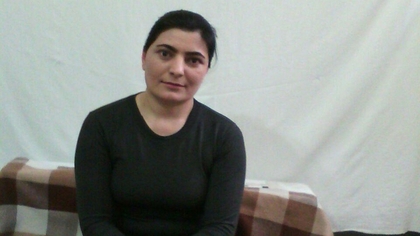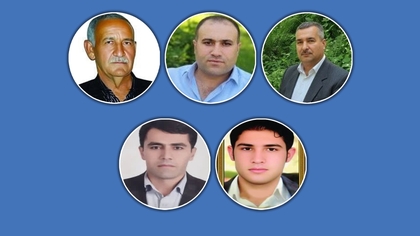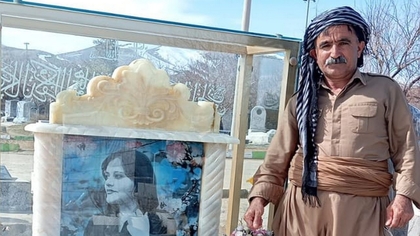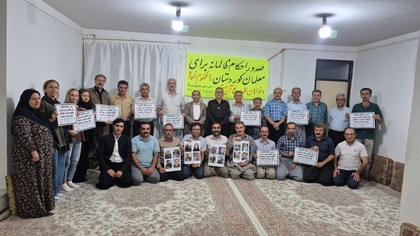The reason of increasing of killing of Kolbars on the Baneh border + the statistics of dead and injured 47 Kolbars in July and August

In the past months, the Baneh border has witnessed the killing and wounding of many Kolbars, so that in August alone, a total of 30 Kolbers were killed and wounded on this border.
In this report, Kurdpa has tried, in addition to presenting the statistics of killed and wounded Kolbars in August, in a conversation with informed sources inside Iran, to discuss the factors of the increase in the killing of Kolbars on the border of Baneh and Nowsud.
According to Kurdpa statistics, in August 2022, a total of 47 Kurds were killed and wounded.
Killed: 5
Wounded: 42
How Kolbars were killed and wounded:
• Direct firing of military forces: 17 cases
• Direct firing of military forces with shotguns: 22 cases
• Falling from a height: 6 cases
• Mine explosion: 3 cases
• Beating by military forces: 1 case
Killing of Kolbars according to borders:
• Baneh border areas: 30 cases
• Nowsud border areas: 17 cases
It should be said that out of the total number of Kolbars killed, four of them were killed in the border areas of Baneh and one in the border area of Nowsud.
• July 23, 2022, Saadullah Younesi, a resident of the village of Golehsor, Baneh, died by direct fire from military forces on the border of Malta and Golehsor, Baneh.
• July 27, 2022, Shirko Chavshini from Varchak village, Sardasht, died as a result of direct gunfire from military forces at Sartzin Baneh border. He is married and has two children.
• On August 7, 2022, Hazhar Faraji, 29 years old and from the village of Sheikh al-Salam Baneh, died due to a direct shot of military forces in the heart at the Sardab Baneh border.
• On August 12, 2022, Mohammad Naderi, 18 years old and from Anjirbus village of Salas-e-Babajani, died due to the shooting of military forces at the border of Sheikh Saleh.
• August 19, 2022, Rahim Mohammadi, 37 years old and a resident of Kupich-Sofla village, Baneh, died as a result of a direct shot by military forces in the heart and chest. He is married and has two children.
Also, in this month, three Kolbers suffered irreparable physical injuries as a result of a mine explosion on the border of Baneh.
• July 31, 2022, Ata Hassanzadeh, from Saqez, was severely injured in the leg area following a mine explosion at the Hangeh jale Baneh border, and the possibility of amputation of his leg is very high. He is married and has two children.
• August 16, 2022, a 17-year-old Kolbar named Amanj Azarpour was seriously injured in the leg area due to a mine explosion on the border of Hangeh Jale Baneh.
• On August 18, 2022, Mohammad Osmani, a resident of Jangesar village of Selmas, lost his both eyes and one leg as a result of a mine explosion on the border of Hangeh Jale Baneh. He is married and has 4 children.
In the past months, shootings at Kolbars in the two border regions of Baneh and Nowsud have increased sharply, so that this month only in these two border regions, shootings at Kolbran took place.
In order to investigate this issue, Kurdpa has tried to talk with informed sources inside Iran about the reasons behind the increase in shooting at Kolbars in these two border areas.
Border areas of Baneh / the reasons for the increase of Kobars and government policies leading to the increase of killing of Kolbars at the borders.
An informed source related to the border of Baneh, traffic in this border area and the increase in the number of Kolbars told Kurdpa, imports at the border of Baneh have always existed and sometimes the borders of this area have been more or less open, but in recent years, especially since 2016, Then, the border areas of Baneh and the large bazaar of Baneh, which even had customers from the big cities of Iran, have lost their prosperity due to the policies of the government.
This source cited the economic crisis, inflation, high prices and people's inability to provide life expenses as the main reason for the increase in Kolbari and acknowledged that many people are forced to turn to Kolbari. People have also chosen Kolbari as a second job, because they have faced many problems in providing living expenses. Even a large number of students have dropped out of school and turned to Kolbari, they cited the lack of future and a clear destiny of continuing their education in the country as their reason.
The mentioned source says that one of the reasons for the increase in the number of Kolbars in Baneh border is the open border as the only open border in Kurdistan province. He says that most of the Kolbars are not from Baneh and they have switched to Kolbari from the cities of Sardasht, Piranshahr, Bokan, Mahabad, Divandareh, Kermanshah, and among them Persian citizens from the cities of Qazvin and Zanjan. There have even been Afghan people who have worked as Kolbars.
This source adds that the increase in the number of Kolbars have also led to an increase in their killings, but on the other hand, the sources of the Islamic Republic mention three reasons as the reasons for the increase in shooting at Kolbars;
First; According to government institutions, Kolbars imports many items that are prohibited according to Iranian laws.
including alcoholic beverages, weapons, and drug pre-production equipment, of course, only the importation of alcoholic beverages can be true, and other cases are nothing more than claims.
Second; On July 16th of this year, two military personnel were killed in BrovishKani border of Baneh. Government sources claimed that these two agents were killed by the opposition forces of the Islamic Republic. While it has become clear that these two agents were killed by their own forces due to a conflict over bribes from gangsters and smugglers, and even on the car of these dead forces, there was a Doshka bullet mark, which can only belong to the military forces. Following this incident, most of the firearms that were previously given to the troops to prevent them from crossing the border were collected, and now most of the troops have AK47 and G3 weapons.
Third; Last month, in connection with the arrest of people in Urmia, the government claimed that these people were "Israeli agents" and had imported equipment into Iran through Kolbars. While there is no document for this claim and people know that whenever the government is under pressure outside of Iran, it will retaliate against the people inside Iran.
pressure on the local journalist Baneh for covering the news of the killing of Kolbars;
At the beginning of August of this year, the Ettlat of the Baneh Intelligence Agency increased the pressure on the managers of Telegram channels due to the coverage of the news of the killed and wounded Kolbars.
This pressure intensified after the killing and wounding of two Kolbar brothers named Saadullah and Ali Younesi in Baneh, and the Ettlat of Baneh repeatedly contacted Telegram channels such as "Rudwo Baneh", "Perseh and Sarehkhushiekani Baneh" and "Baneh 24". and warned them to refrain from publishing news about Kolbaras. Earlier, FATA police had warned them in this regard.
An informed source in a conversation with Kurdpa, while confirming these pressures, admitted that the activists are under pressure due to the news coverage of the killing of Kolbars. Even the people inside Baneh are under pressure under the pretext of Kolbari. Because the military forces go to these houses due to the residence of Kolbars of other cities in rented houses and put pressure on them, or when the Kolbars park their cars somewhere until they return from Kolbari, the military forces arrive and they harass the Kolbars to receive bribes.
Preventing the holding of a protest gathering of civil activists in the city of Baneh in protest against the daily killing of Kolbars;
Following the continuation of the systematic killing of Kolbars, on the evening of Wednesday, July 27th, a group of civil activists of Baneh announced by publishing a call on social networks that on Thursday, July 28th, in protest against the daily killing of Kolbars by the military forces of the Islamic Republic of Iran, in front of the governorate of this city. They will hold a rally.
An informed source said in a conversation with Kurdpa in this regard; From 6 o'clock in the morning on Thursday, July 28th, many uniformed forces were stationed in front of the Baneh governorate and by militarizing this area, they refused to gather activists to protest. Even the night before that, the governorship and other relevant officials were on alert.
border areas of the Nowsud;
Earlier, an informed source told Kurdpa about the mass killing of Kolbars at the Nowsud border: "In the past months, the Nowsud border was closed compared to before, when it was a little freer and Kolbars could commute, and also many Kolbars from the cities of Ilam, Sarpol-e-Zahab, Javanrud, Salas-e-Babajani, Ravansar, the cities of Kermanshah, etc. come to Paveh and the border of Nowsud for kolbari, and this has caused a large number of kolbars in this border.
According to the statistics recorded by Kurdpa Human Rights Organization;
• In 2021, a total of 225 Kolbars were killed and wounded in Iranian Kurdistan. (45 killed, 180 wounded)
prepared by: Evin Moustafazadeh



